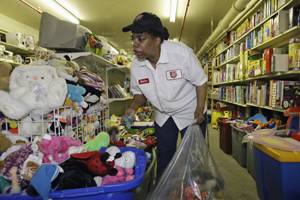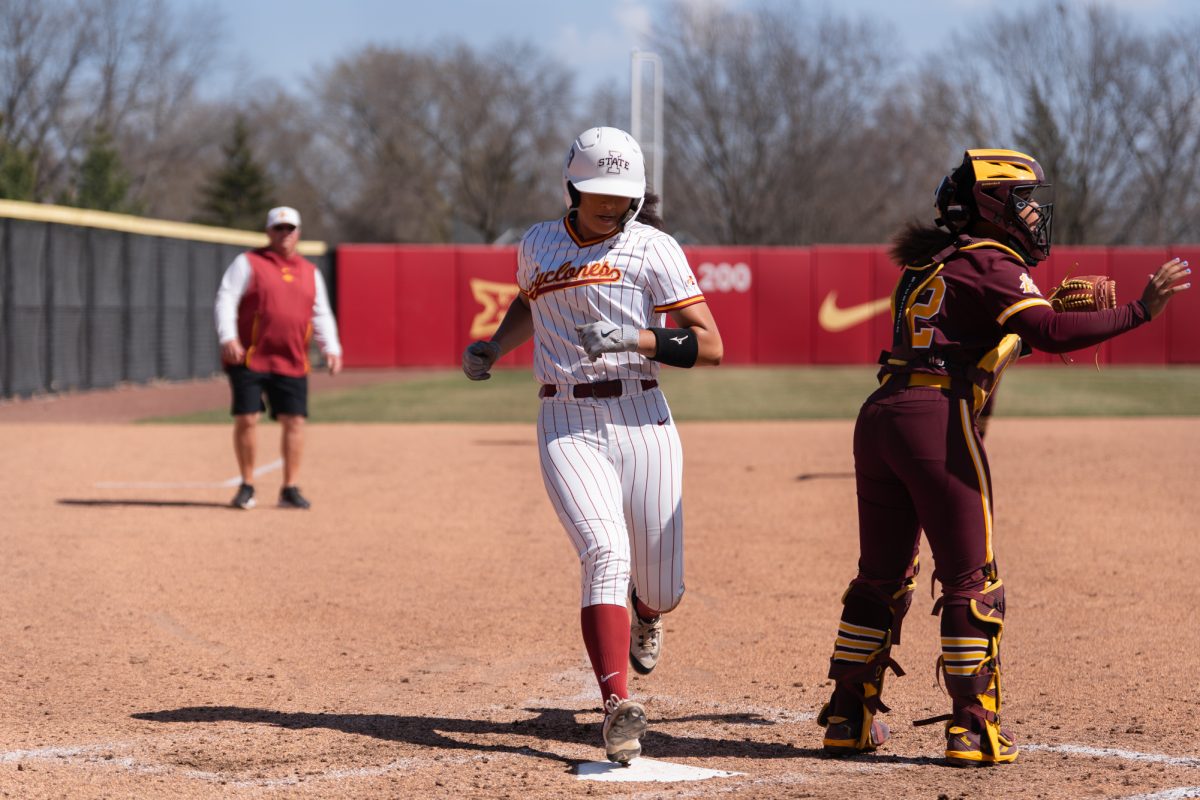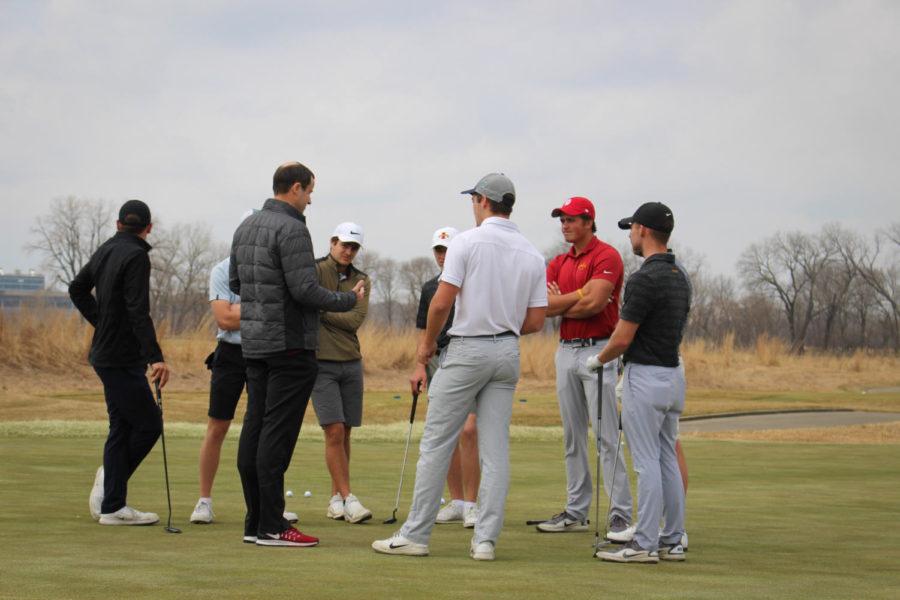Some parents struggling with back-to-school buys

Sandra Cochrane, manager of the Salvation Army thrift store near downtown Chicago, sorts though inventory at the store on Wednesday, Aug. 13, 2008. In this weak economy, Cochrane says inventories of back-to-school items can be limited and donations nationally are down as people are holding onto items for longer or try to sell them to consignment stores. (AP Photo/Charles Rex Arbogast)
August 22, 2008
CHICAGO — Charles Lane-Bey combed through racks of blue jeans at a Salvation Army thrift store and held up a pair with potential to his 8-year-old son, Edward, who swung them over his shoulder with a smile.
Forty-seven cents for a sturdy pair with white and red stitching. Not bad if it’ll last all school year.
“A couple of years ago, I was able to buy everything practically new,” said Lane-Bey, a U.S. Postal Service worker who’s struggling to make ends meet. “You just have to do some things different to adjust.”
With cash tight and fuel and food prices high, many parents are eyeing back-to-school lists warily, looking for bargains and buying used clothes. In some cases, they’re even thinking about sending their children to school without all the supplies they need.
Thrift stores like Goodwill and Salvation Army say more parents and teachers are shopping at their stores nationwide, quickly snatching up school uniforms and supplies.
Goodwill sales nationwide were up 6.2 percent for the first six months of 2008 compared with the same period in 2007, and are also expected to be up for the back-to-school season, spokeswoman Lauren Lawson said.
“We’ve seen an increase in terms of clothes, school supplies, broken-in sports gear. It’s a great way to get brand name styles for cheaper,” she said.
Melissa Temme, a national spokeswoman for the Salvation Army, said traffic and sales are up, although the organization doesn’t have firm numbers yet because stores submit official reports only once a year.
“It’s not just the working poor, we’re also seeing more middle class families coming to us,” Temme said.
Linda Boykin, who recently was laid off from a customer service job at a health care company, bought a bag full of school uniforms and casual wear for her three children at a Chicago Salvation Army store. The cost for 15 items: $4.66.
“They can start school just like any other kids,” she said. “It’s just not new.”
Inventories of back-to-school items can be limited, and donations nationally are down as people hold onto items longer or try to sell them to consignment stores, store officials say.
“I’m trying to scrape up everything I can find,” said Sandra Cochrane, manager of a Salvation Army store in Chicago.
Market researchers are divided on the topic of school spending. America’s Research Group released a report in July saying almost 30 percent of parents will reduce spending for back-to-school. NPD Group, another market research firm, says spending will increase slightly as sales in electronics hold steady.
“Parents would go naked before they would send their kids to school without the right tools to be able to get an education,” said Marshal Cohen, chief industry analyst for NPD.
But teachers still worry, especially in low-income areas, where parents are already cutting back and can’t cut back much more. If kids come without supplies, many teachers will end up spending more out-of-pocket though their own finances are tighter.
In rural Carlinville, Ill., first grade teacher Jeanie Johnson said most of her students are low-income, so she’s cut back the supply list she’s sending to parents. Gone are extras like markers and colored pencils.
Even so, she expects she’ll need to provide some items to students.
“You don’t want a child to feel embarrassed or left out,” she said. “That’s not a good way to start the school year.”
Lisa Smith, who teaches preschool at DePriest Elementary School in Chicago, spends several hundred dollars of her own money each year for classroom supplies. But with her own pocketbook hurting, her class will have to do without the fun extras this year.
“I drive a gas guzzler,” she said. “Gas alone is making me rethink a whole lot of things. It looks like we’ll have to do fewer projects, or just come up with another creative way to do them.”
Some parents are making hard choices, too.
Otha Henderson of Chicago says she simply can’t buy a graphing calculator, which can cost hundreds of dollars, for her 15-year-old daughter.
“She said she can’t have a regular calculator. It has to have different functions on it,” said Henderson, who lives on a fixed income of disability checks and says rising living expenses have depleted her savings. “Well, I’m not going to get that.”
For Wanda Hopkins, her daughter’s back-to-school list has become a matter of priorities, and she might not buy some mandatory items.
“You weigh it,” said Hopkins, whose daughter is entering fourth grade at Chicago’s Andrew Jackson Language Academy. “You make sure that the teacher understands what’s going on so they don’t penalize them.
“I know for a fact people like me are going to have a hard time.”






